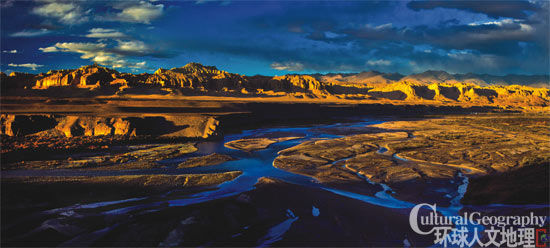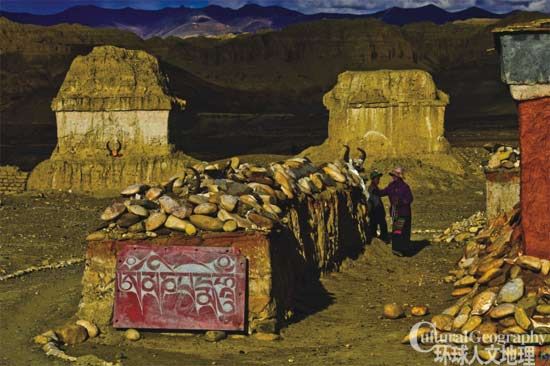The Sutlej River witnessTibetAncient legend: bright Zhang civilization in here, in the flourishing of the Guge Dynasty but the mysterious disappearance, the sea like the vast Zanda forest soil showed extraordinary as if done by the spirits of nature, the temple "108 tower" in the pilgrim pious eyes stand proudly......
 Like river basin
Like river basinThe Sutlej called Lang Qin Tibet cloth, is located in TibetAliThe territory, and have this name because of its shape and a trunk similar source. It originated in Okahito Namisai Koyama's feet, the source elevation of 5300 meters, 18 by the size of rivers converge into, a total length of 309 kilometers, in the mountains of Himalaya after crossing into theIndiaRiver.
 Millions of gullies
Millions of gulliesThe Sutlej greatest achievements, in the Zanda region is out of a piece of grass delicious, rich fertile land -- like Spring Valley, also known as the "granary of ali". As Spring Valley is the main agricultural and pastoral areas in Ali area, stocking Tibetan sheep, yak, the main planting barley, pea and spring wheat.
 The ruins of ancient civilizations
The ruins of ancient civilizationsPerhaps it is because of the Sutlej grace, it became the local people in the eyes of the "river god". In Ali, legend about it is widespread, such as Tibetan Buddhism is described: "Okahito Namisaimine was lying around the lion, elephant, horse and peacock four animal, because they could not bear to see the Ali area in successive years of drought, from the mouth to save water everfount ejected, finally formed the new Shiquanhe, the Sutlej, Maquan River, the peacock river. These currents flowing through the mountain valley and vast plains, into the vast sea......" Today, on the Sutlej legend carved in many of the local temple murals, for posterity.
On one page1234The next page |
No comments:
Post a Comment